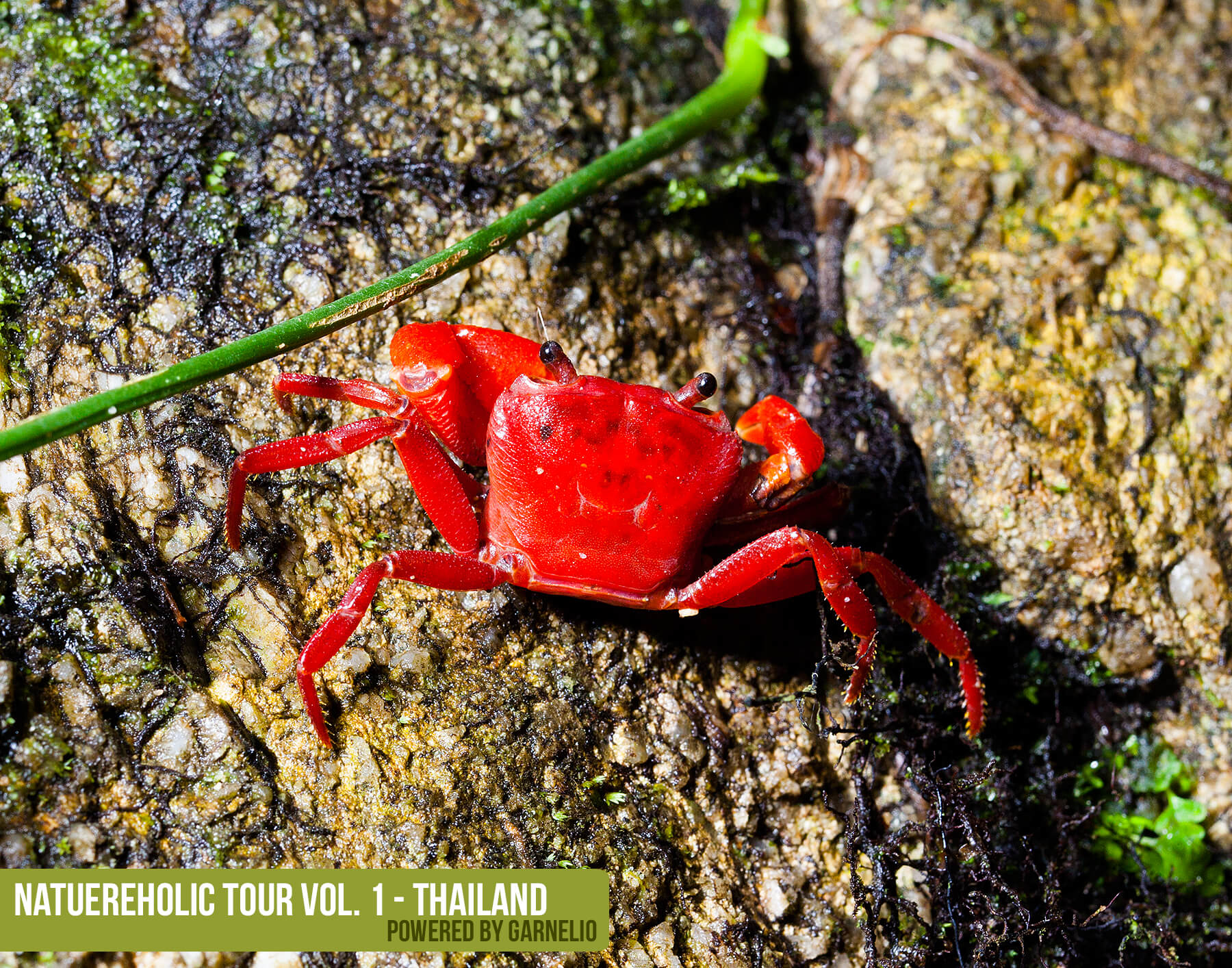NH Thailand Tour - Habitat: Bright red freshwater crabs - Visit: Thai invertebrate farm!
Relatively at the end of our trip we went to Phuket for two more days. Our flight home was scheduled to depart from the airport there, so we took the opportunity to visit our friend Farook, who runs a small invertebrate farm in his father's house there. Our accommodation was quite close to his farm, and we were very happy to be his guests.
Briefly about Farook - we met him through Facebook, there he is active in a Thailand group, where we also join. When we mentioned there that we were going to Thailand, he invited us to his farm and he said he had a lot of great crabs and we should definitely come by. He hasn't been in the business very long, but he's built a really nice little facility there, and he puts his heart and soul into it.
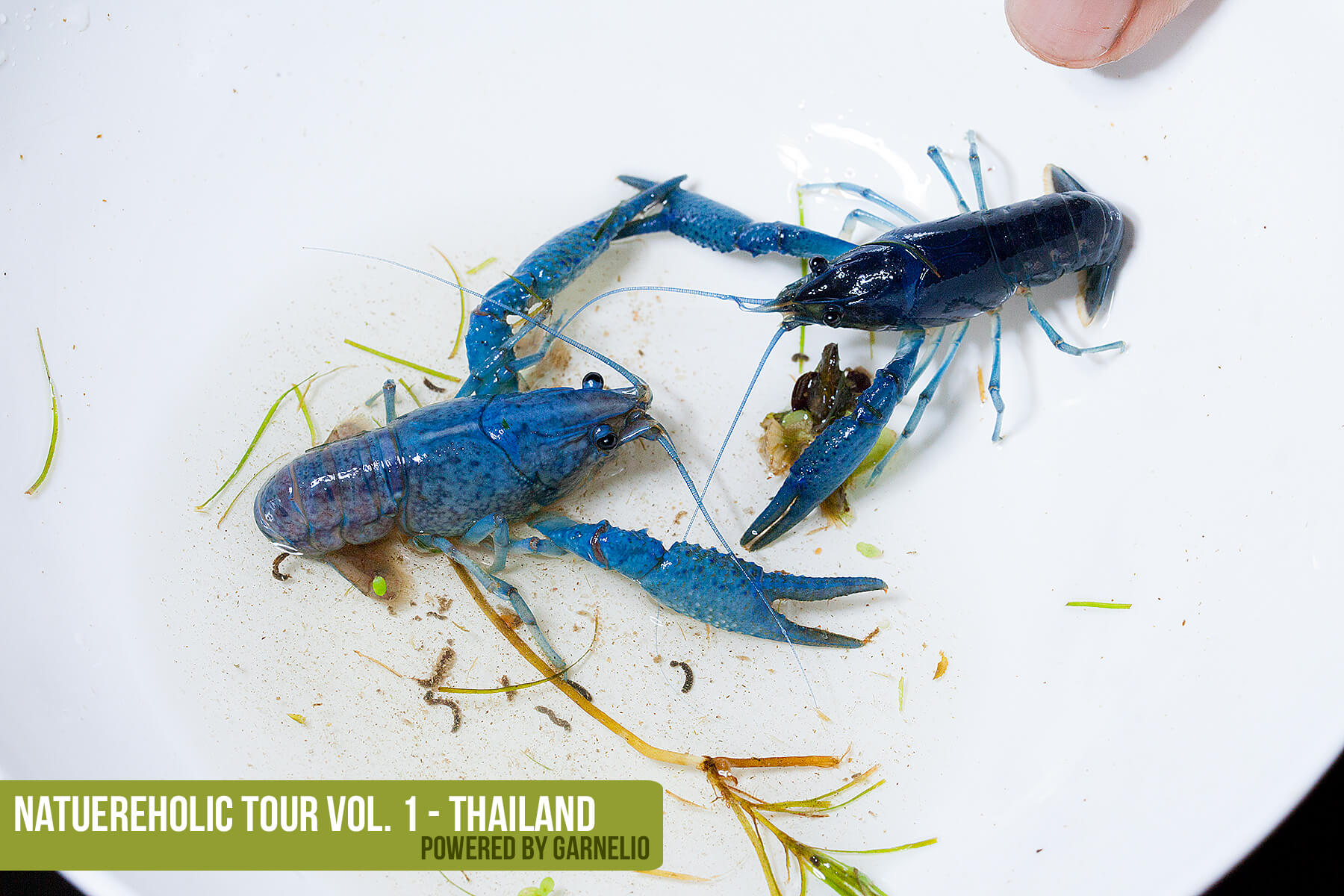
Batik crabs (Metasesarma obesum)
Here you can see the batik crabs (Metasesarma obesum) that Farook exports mainly to other Asian countries. They occur right on his doorstep, and he ships them to Hong Kong to a wholesaler, from where they are shipped all over the world.
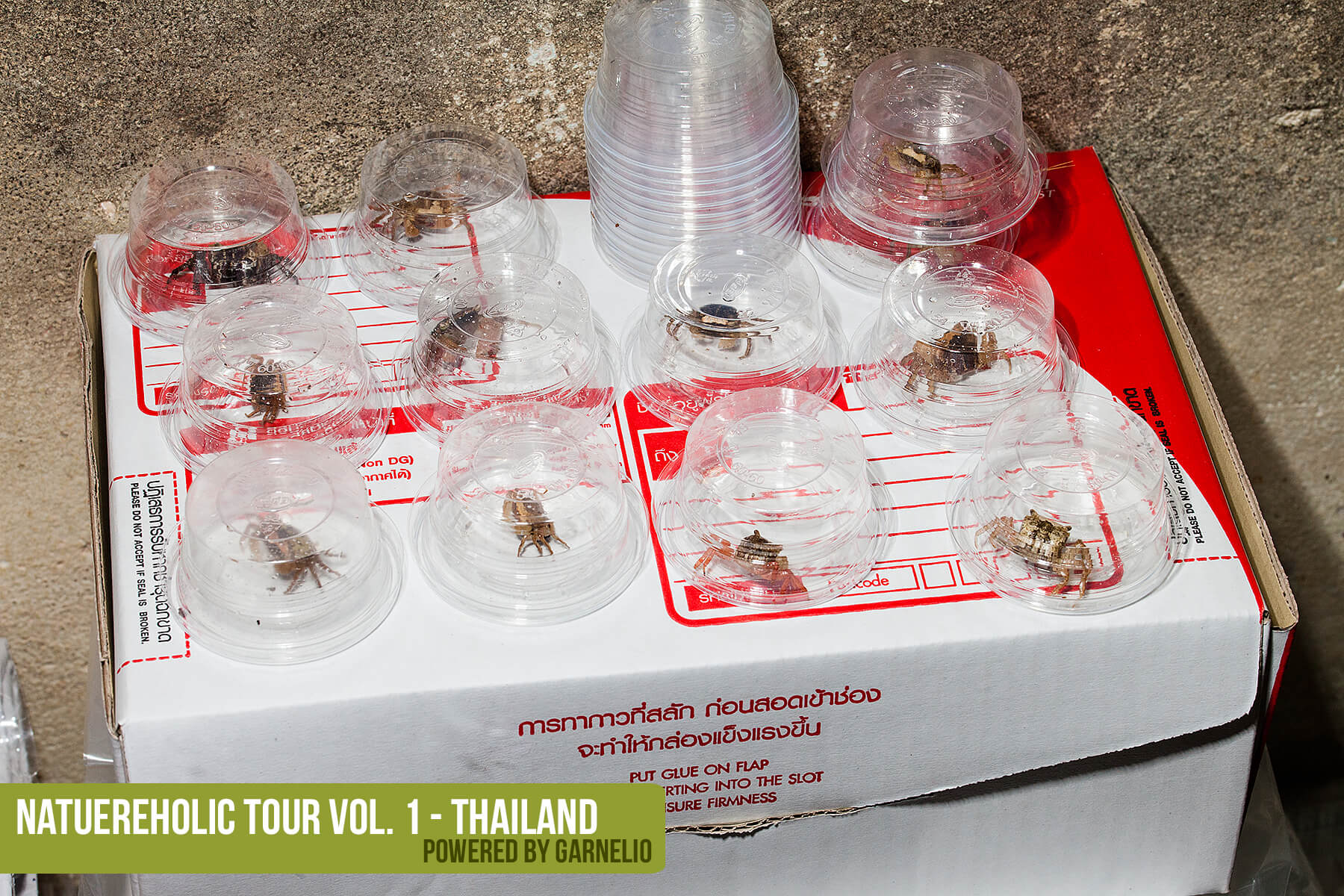
Minerals are also important in Thailand
This is how the batik crabs are temporarily cured. As you can see, Farook has recognized the importance and significance of minerals and uses appropriate means. A great and also optically more attractive alternative to the cuttlebones used here would be for the home aquarium or aquaterrarium for example the NatureHolic Mineralcubes.
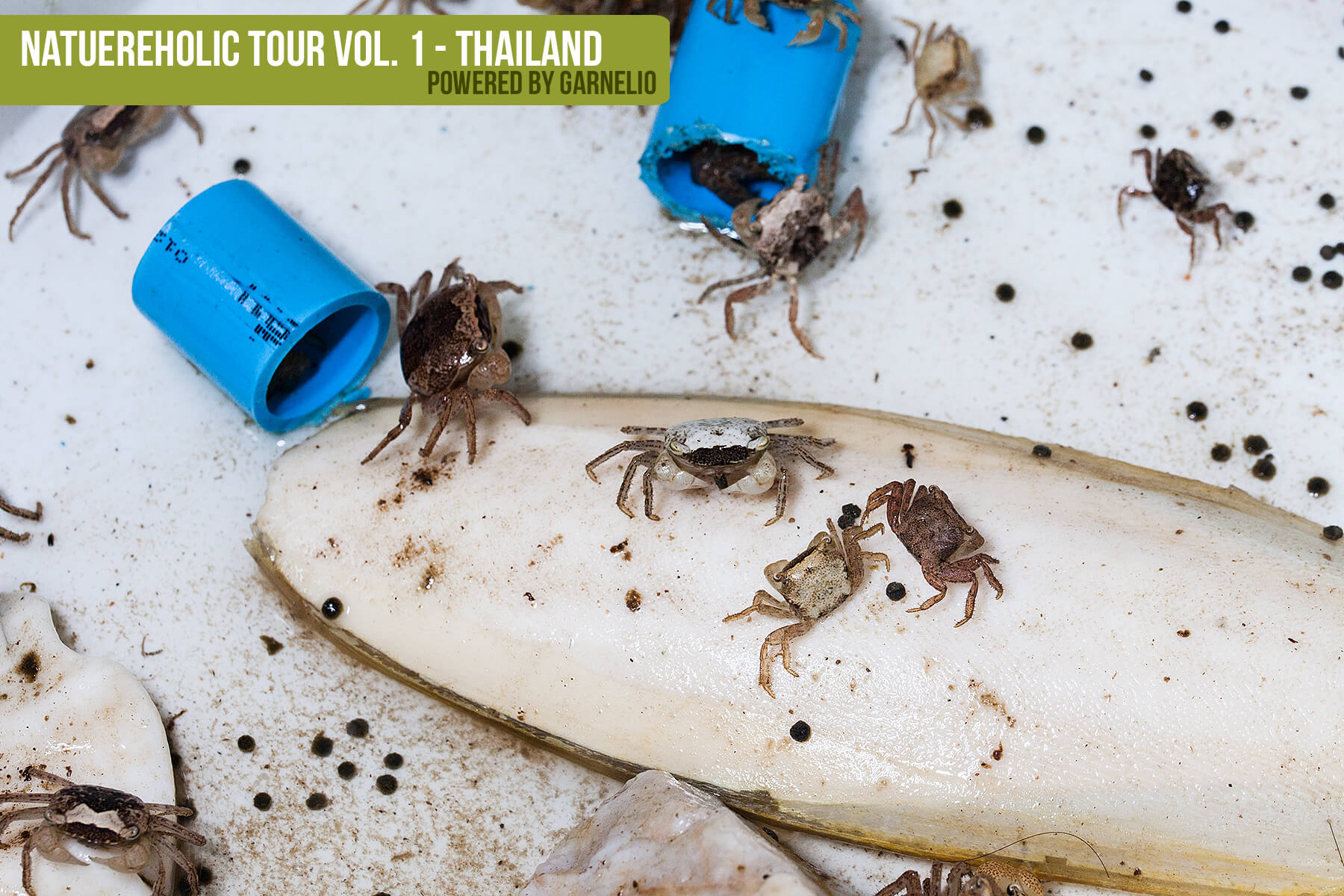
Macrobrachium from Thailand
These large black Macrobrachium we took in Farouk's farm, but they also live wild in a waterfall near Phuket, practically right at Farouk's doorstep.
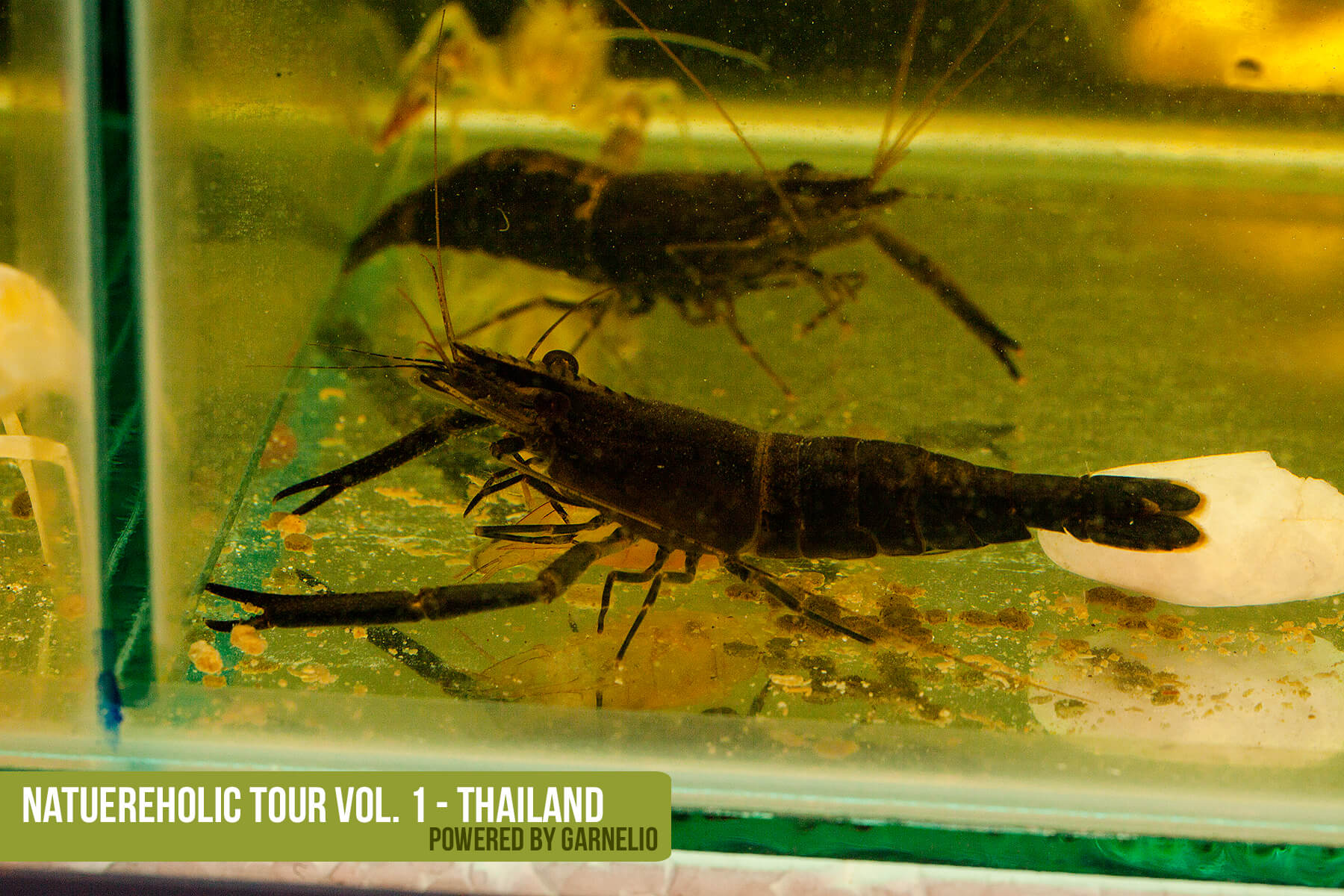
Procambarus clarkii "Ghost" fully in the trend
In Thailand, Procambarus clarkii "Ghost" are all the rage right now, and they are traded at really crazy prices: the most expensive crayfish in the world, a very beautifully colored clarkii Ghost, was sold in Thailand for a whopping 1 million baht (that's just over 25,000 euros!). For an average young clarkii Ghost prices of about 2.000 Baht are called, nevertheless equivalent 50 Euro. Also Farook has beautiful blue clarkii Ghost sitting with him in the facility. There are many crayfish fans in Thailand and Farook is one of them.
Unfortunately, these animals were banned in Europe before the trend to the Ghost could really establish itself with us, and meanwhile the breeding and passing on of all variants of Procambarus clarkii is no longer allowed, which I find very sad - the animals are just great! Therefore we enjoy the photos from Thailand, where the breeding of the color form continues.
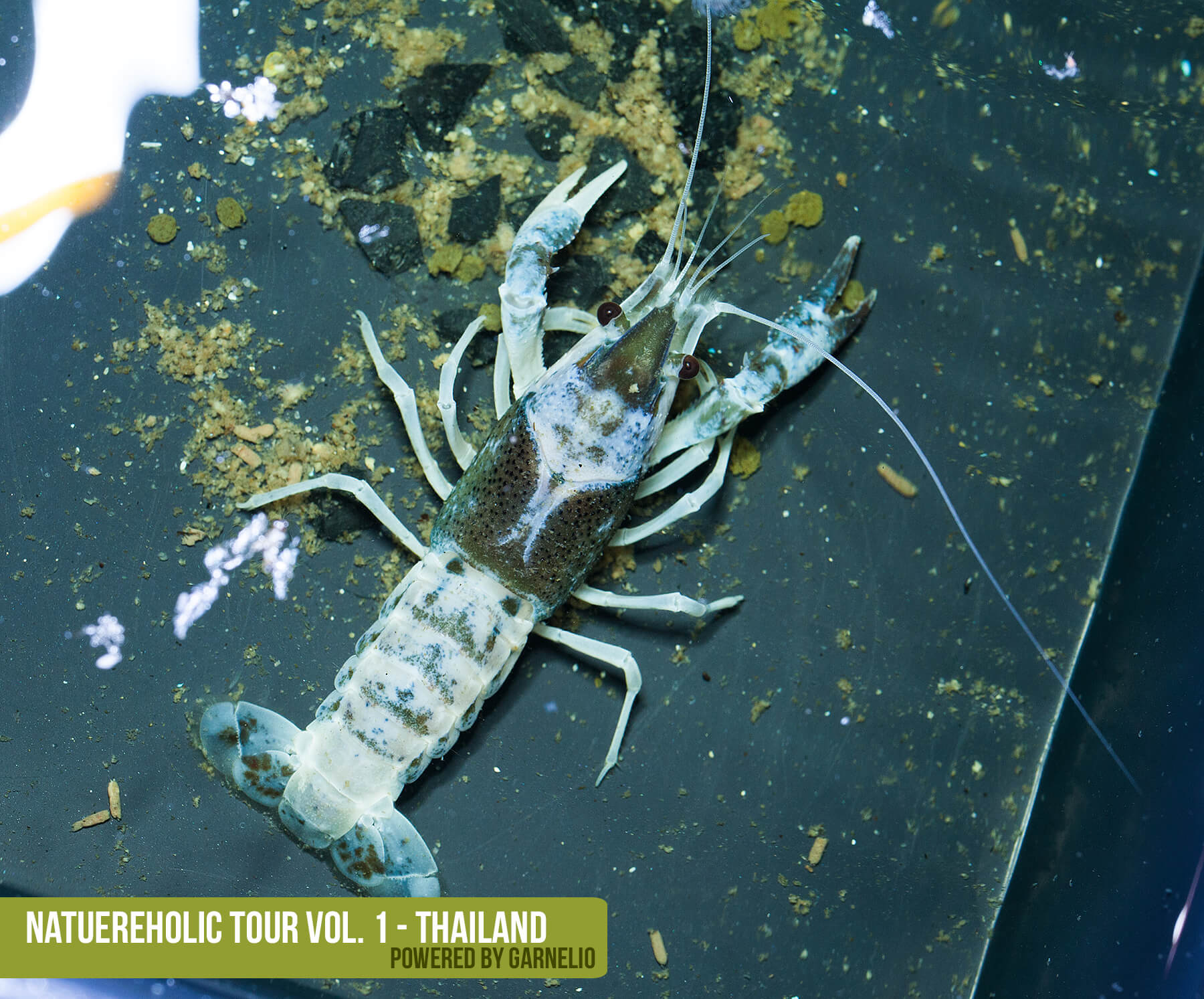
Farooks facility
Here you can see a part of Farook's farm ... "farm" is perhaps a bit much to say, he has three rooms for his animals. Farook was all excited and cleaning up before our visit, and his mini farm was really nice and very presentable.
Farook keeps various crayfish in addition to land crabs and hermit crabs: in addition to his Procambarus clarkii, he also has Florida crayfish.
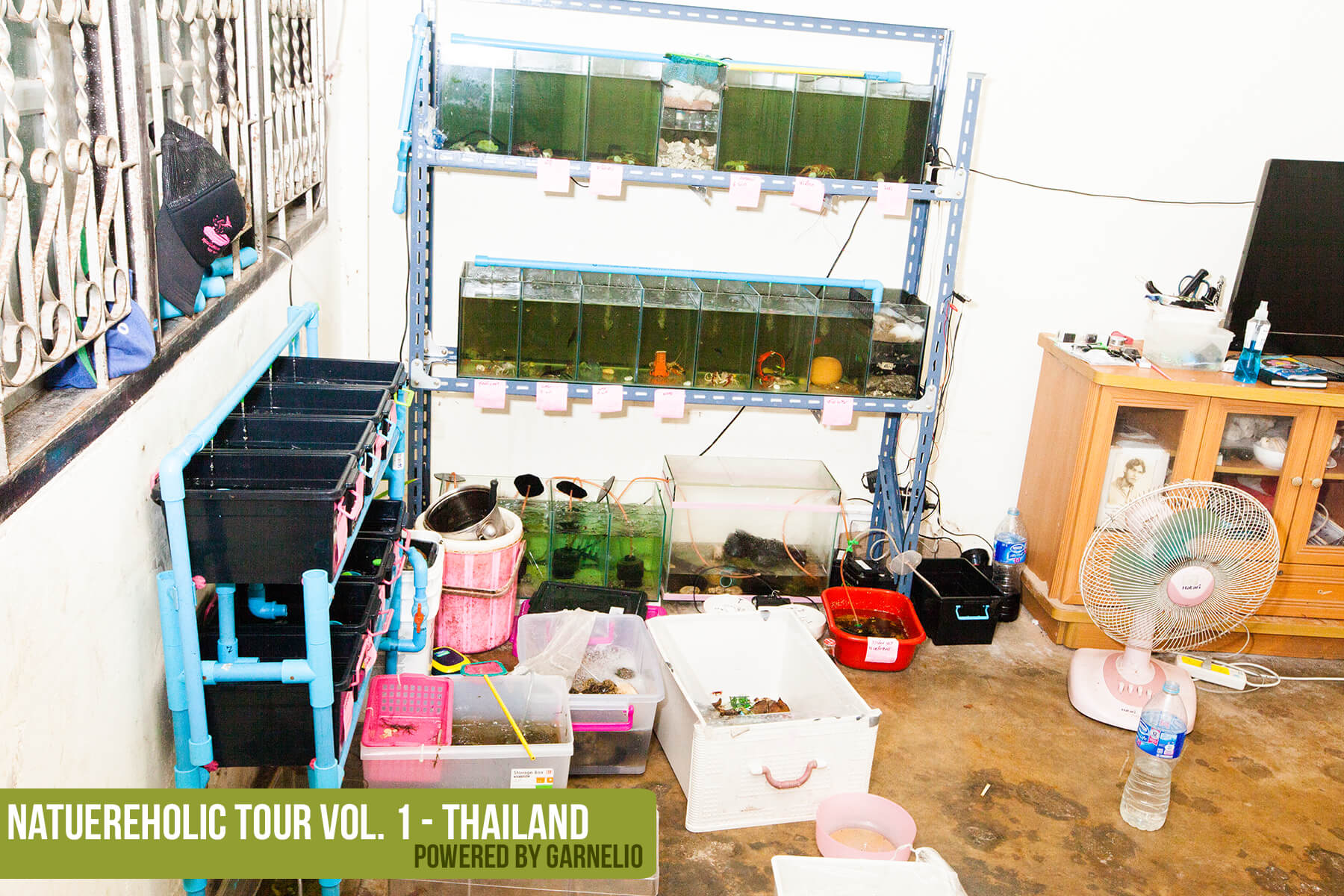
Plea for aquaristics
Farook and his father live in a very poor area, you could almost call the neighborhood a slum. The invertebrate trade ensures his survival, and when we were out in nature with him, he told us that more and more hotels are being built here as well, pushing nature further and further back. He is one of the very few (if not the only one) who cares about nature conservation and habitat preservation in the area - his merit, his whole life depends on the fact that not everything is destroyed! As we think, another nice example that aquaristics and animal husbandry in general does not destroy everything, but on the contrary gives an incentive that the environment is protected and preserved. Except for Farook, who is financially dependent on it, unfortunately no one there is interested in protecting a beautiful waterfall along with the animals that live there. Unfortunately, this is often the case in these countries ..
There are thousands of crabs in nature, and what Farook collects there has no negative influence on the species in any way. But his impact on his fellow man is great. He is a voice in his village calling for not throwing trash into habitats and not destroying nature. All those who call for a ban on exotics in order to preserve nature should keep this in mind - with a ban we achieve the opposite, thereby opening the door to unrestrained habitat destruction in the countries of origin of our animals. The poorest of the poor, the collectors, will be punished, and then really nobody cares how the biotopes are doing. Unfortunately, many people in these countries are not doing so well, and therefore money is made out of everything as it somehow can. If the exotics fall away as a source of income, the biotope is flattened and a hotel or a cattle farm is built there.
Beach crab from the coast near Phuket
This typical beach crab was caught by Farook himself at the coast of Phuket.
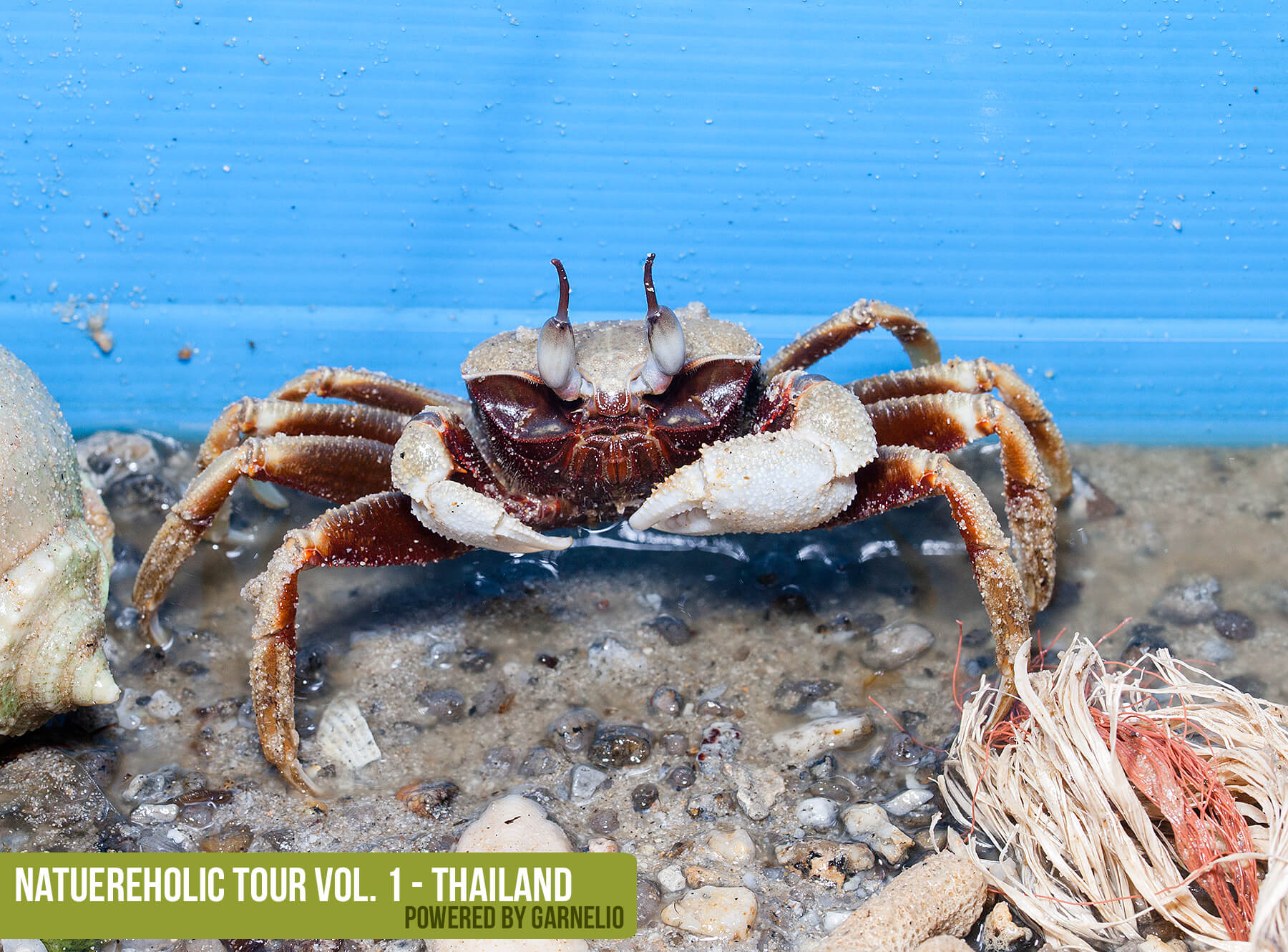
Farook's crab breeding facility
Here you can see a part of the crab breeding facility Farook built himself. Unfortunately, the local people are not very well informed, and Farook also thought his Florida crayfish were blue Procambarus clarkii. He was not even aware that these are not the same species. On the other hand, he thought the red clarkii was a different species than the Ghost. Not much importance is attached to the scientific names (which also explains one or the other confusion among wholesalers), people practically only work with trivial names.
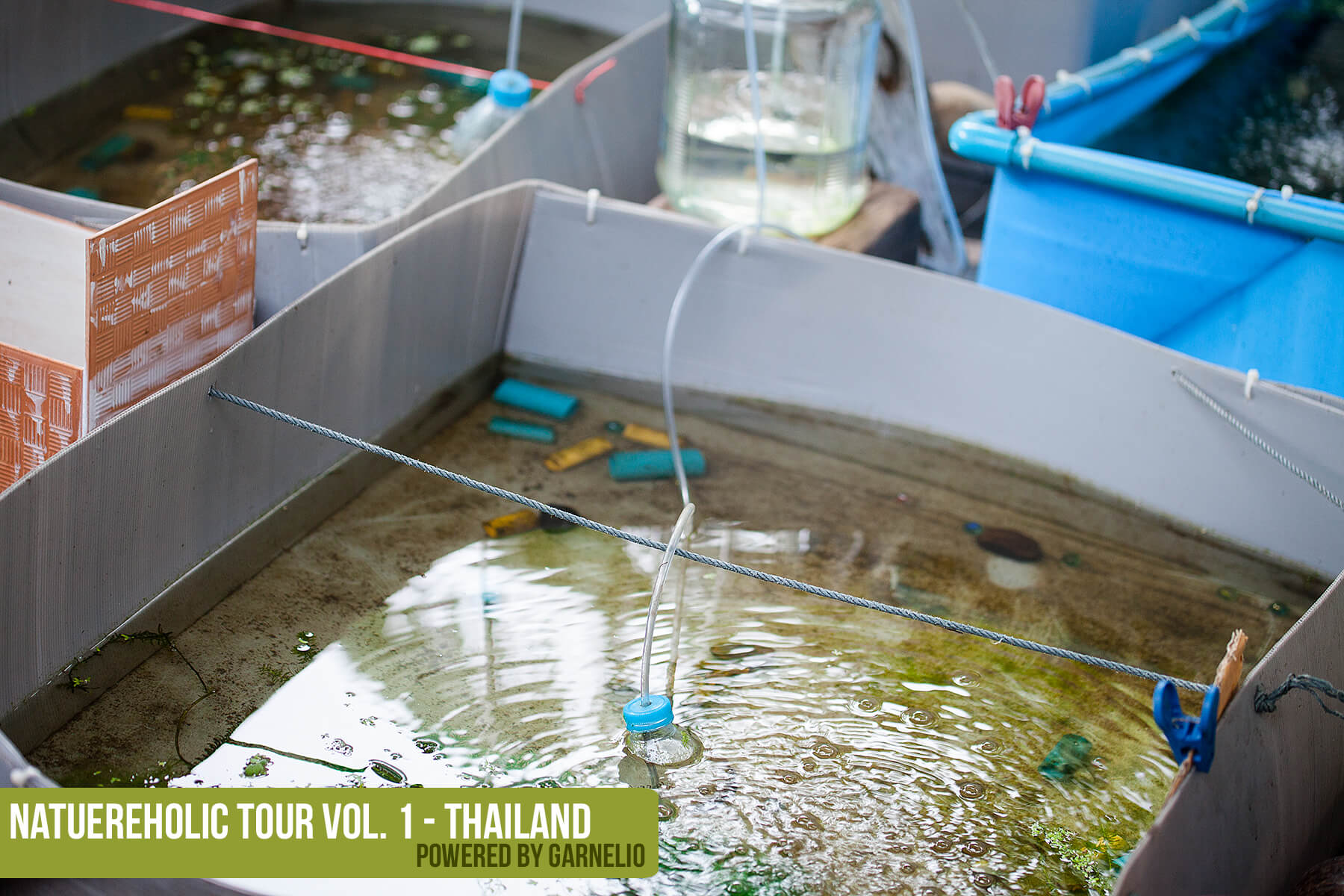
Batik crab hatchery
The larvae of the batik crab seen here are in Farook's quite successful batik crab breeding facility - so the Metasesarma obesum he exports are not exclusively wild specimens, but also offspring.
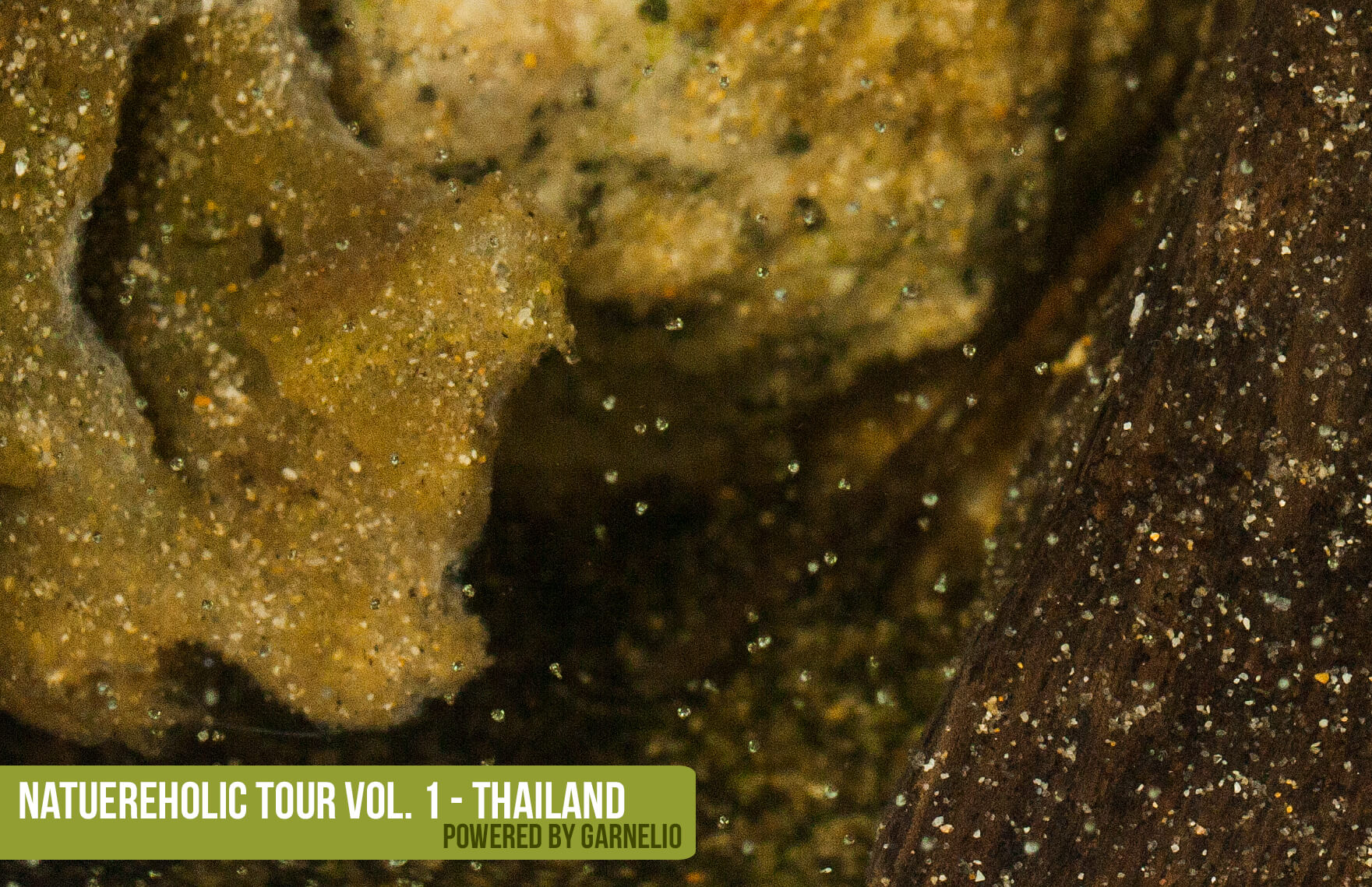
The CPO crab (Thai waterfall crab Phricothelphusa limula)
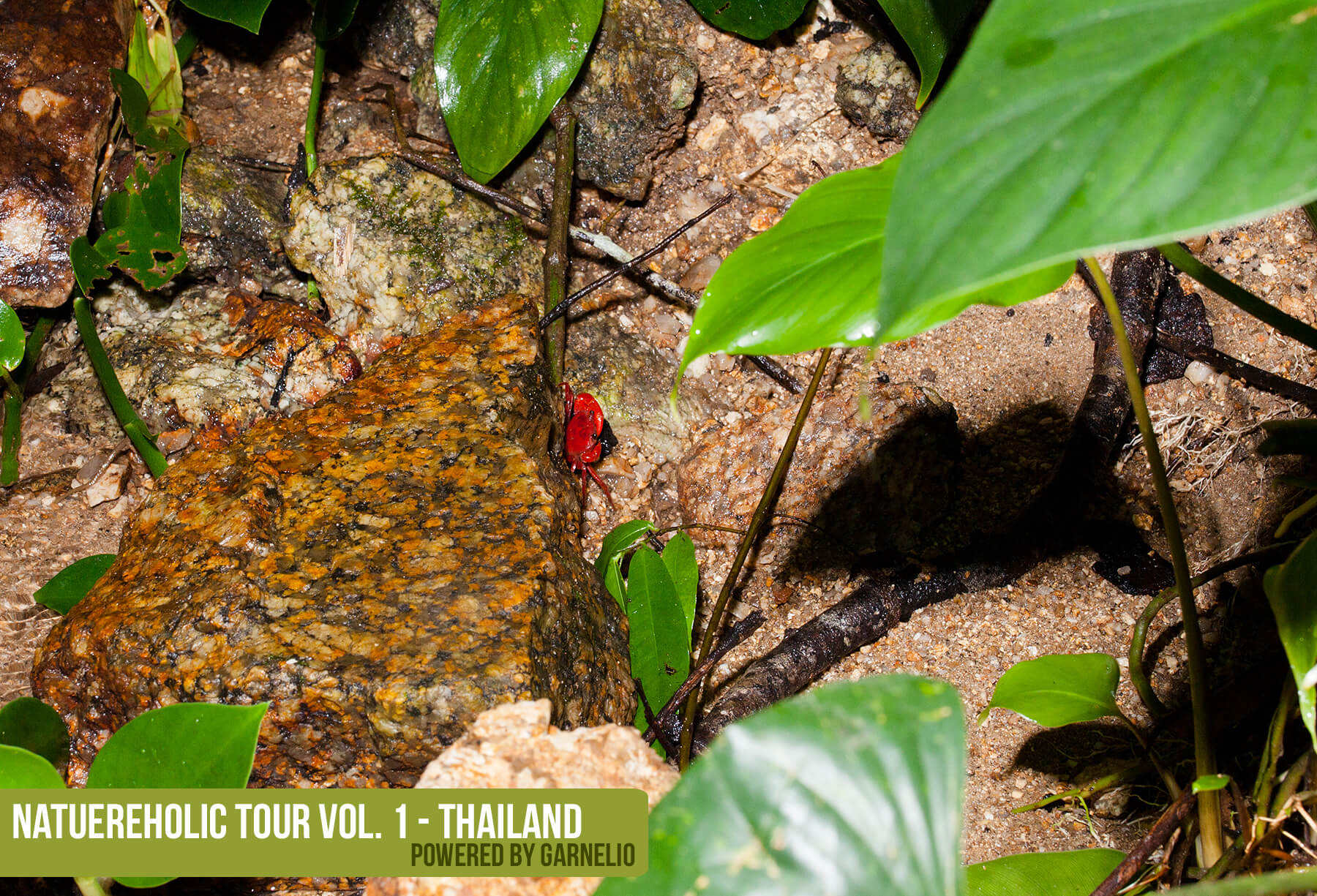
This animal I named CPO crab (scientific name: Phricothelphusa limula). Farook told us about a bright red-orange semi-terrestrial, freshwater-dwelling crab with large eggs that occurs practically right outside his front door. And we were also quite right only about 5 minutes away from his door until we got to this waterfall. Already on the way there we met many of these great dark orange crabs. They are found here in very large quantities. One of their names is Thai waterfall crab.
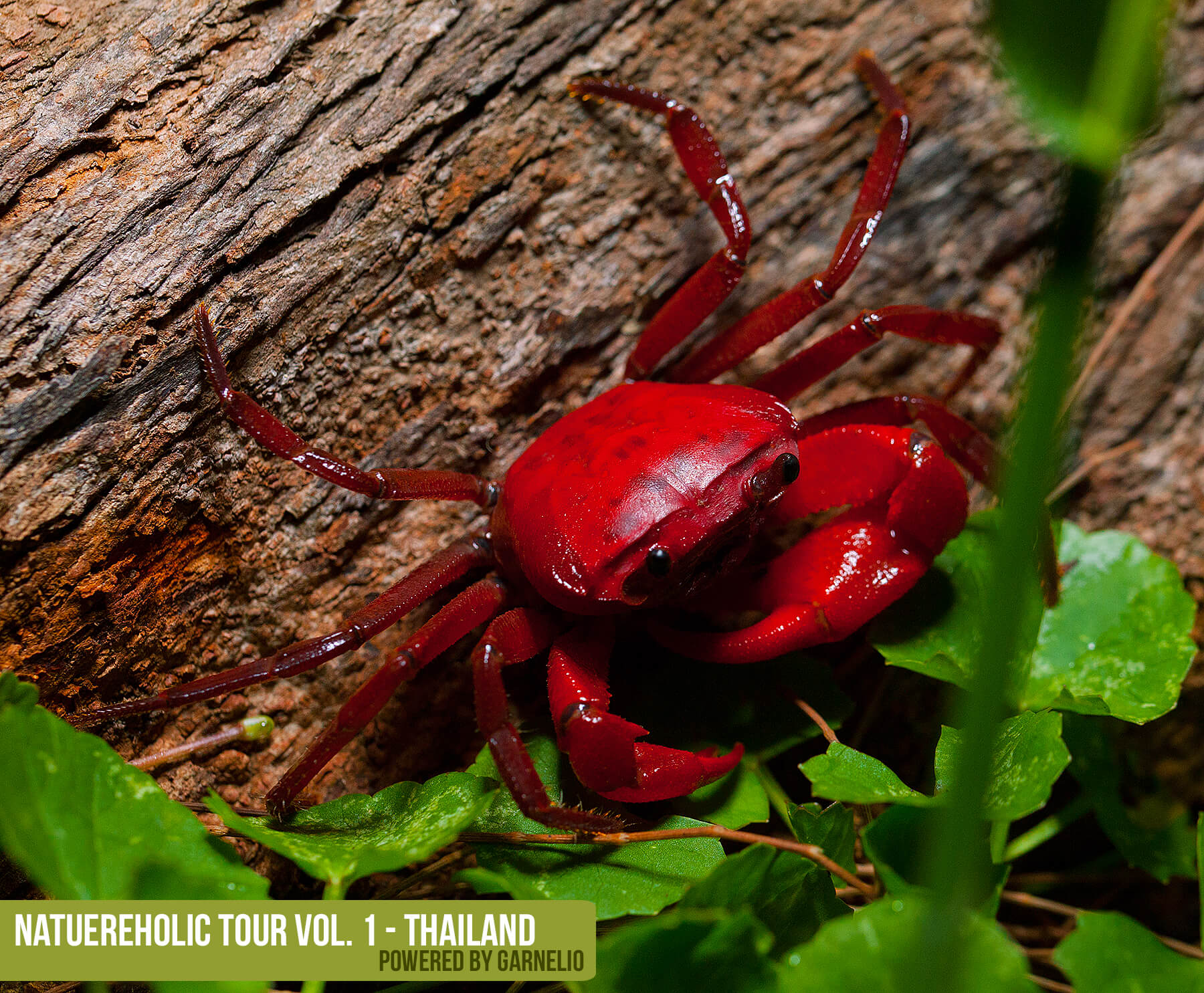
We seriously wondered why they are so brightly colored - could it be a warning color? The crabs are really intense red-orange! The solution to the mystery: there are red rocks in this creek, and here the intensely colored animals are perfectly camouflaged. So the color makes perfect sense in this environment.
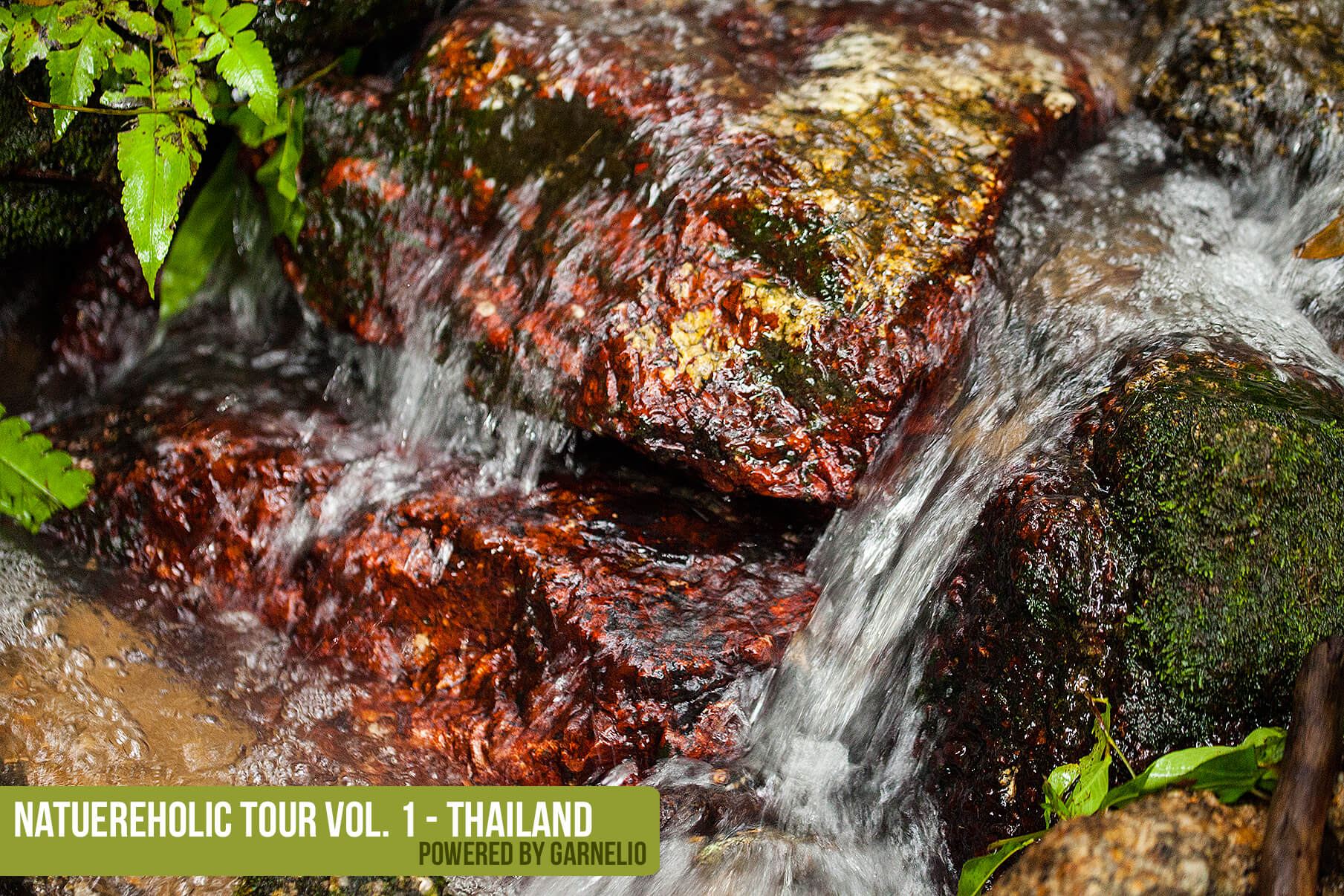
These waterfall crabs are just mega pretty. They grow to about 6-7 inches and carry large eggs. So they don't need saltwater for their young. Phricothelphusa limula has been successfully bred several times in the hobby and is considered to keep very well in the aquaterrarium.
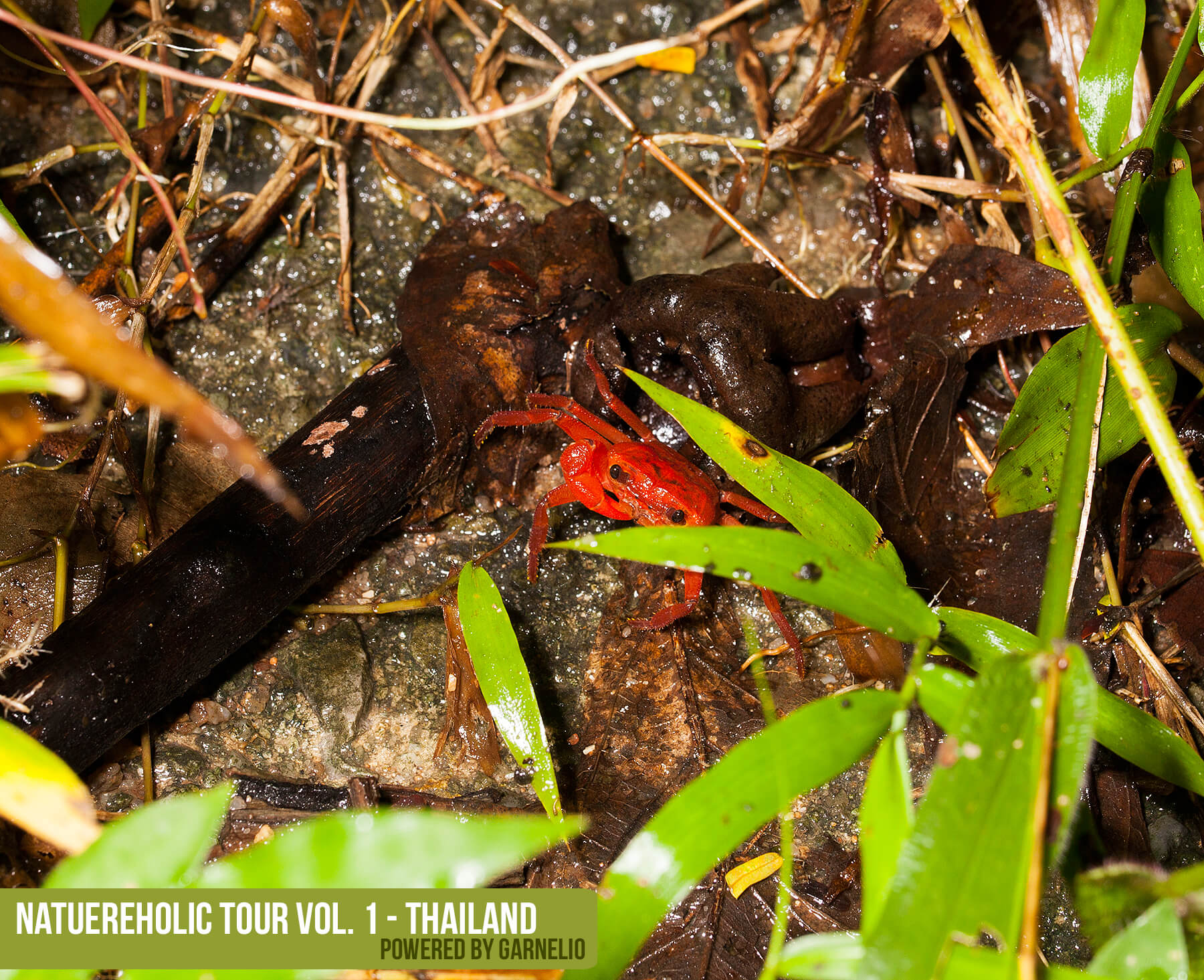
Phricothelphusa limula have a handedness, i.e. a relatively large and a smaller claw. The larger claw is used for threatening, the smaller one is a good tool for feeding. We could observe that the animals have acquired both animal and plant food sources. They live on land and also in water. In the literature they are described as mainly fructivorous, that is, eating fruits. This can certainly also be easily implemented in the home aquaterrarium.
